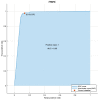Use of a Feed-Forward Back Propagation Network for the Prediction of Small for Gestational Age Newborns in a Cohort of Pregnant Patients with Thrombophilia
- PMID: 35454057
- PMCID: PMC9025417
- DOI: 10.3390/diagnostics12041009
Use of a Feed-Forward Back Propagation Network for the Prediction of Small for Gestational Age Newborns in a Cohort of Pregnant Patients with Thrombophilia
Abstract
(1) Background: Fetal growth restriction is a relatively common disorder in pregnant patients with thrombophilia. New artificial intelligence algorithms are a promising option for the prediction of adverse obstetrical outcomes. The aim of this study was to evaluate the predictive performance of a Feed-Forward Back Propagation Network (FFBPN) for the prediction of small for gestational age (SGA) newborns in a cohort of pregnant patients with thrombophilia. (2) Methods: This observational retrospective study included all pregnancies in women with thrombophilia who attended two tertiary maternity hospitals in Romania between January 2013 and December 2020. Bivariate associations of SGA and each predictor variable were evaluated. Clinical and paraclinical predictors were further included in a FFBPN, and its predictive performance was assessed. (3) Results: The model had an area under the curve (AUC) of 0.95, with a true positive rate of 86.7%, and a false discovery rate of 10.5%. The overall accuracy of our model was 90%. (4) Conclusion: This is the first study in the literature that evaluated the performance of a FFBPN for the prediction of pregnant patients with thrombophilia at a high risk of giving birth to SGA newborns, and its promising results could lead to a tailored prenatal management.
Keywords: machine learning; small for gestational age; thrombophilia.
Conflict of interest statement
The authors declare no conflict of interest.
Figures





References
-
- Suhag A., Berghella V. Intrauterine growth restriction (IUGR): Etiology and diagnosis. Curr. Obstet. Gynecol. Rep. 2013;2:102–111. doi: 10.1007/s13669-013-0041-z. - DOI
-
- Romo A., Carceller R., Tobajas J. Intrauterine growth retardation (IUGR): Epidemiology and etiology. Pediatr. Endocrinol. Rev. 2009;6:332–336. - PubMed
LinkOut - more resources
Full Text Sources

